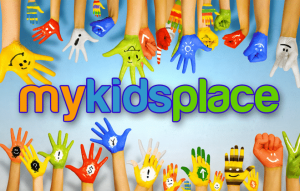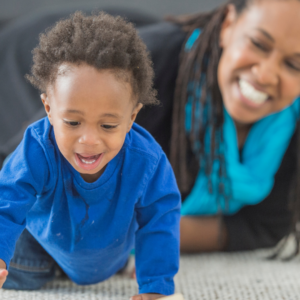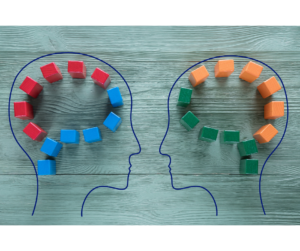Introduction
Welcome to the third and last installment of our “Social Skills” series. If you have not already, please check out our Social Skills and Social Skills & Autism articles to obtain a better understanding of social skills and overall child development in general! So far we have talked about how social skills provide the foundational building blocks to acquiring interpersonal and life skills. In addition, we took an in-depth look at the link between autism symptoms and social development. In this last blog post, we will cover social skill milestones and intervention strategies for developing social skills.
Social Skill Milestones
New parents have an overwhelming number of things to keep track of during the first years of their child’s life. To help organize and hopefully make things easier, here is a breakdown of some major social skill milestones and appropriate age ranges to keep an eye on (Morin, 2020). Find your child’s age range to see if they are hitting their social milestones on time.
Ages 2 Months-2 Years
At two months, your infant may look and smile directly at you. At four months, expect your infant to smile in response to parent or caregiver smiles. A six month old will respond to other’s emotions by crying, smiling, or laughing. At nine months, signs of stranger anxiety and distress when left alone with strangers will begin to appear. At twelve months, you may begin to play simple and interactive games, like peek-a-boo. Parallel play, in which children play alongside each other but not together, and simple pretend play will appear between 18 months-2 years old. Cooperative play, where toddlers play together to achieve a common goal will also appear between 18 months and 2 years old.
Ages 3-6 Years
Around ages three to four, your child will feel more comfortable separating from familiar people to play with other children. Conversational skills, independence and motivation to regularly play with others all appear between years five and six.
Ages 7-10 Years
Between years seven and eight, you can expect to see an awareness of others’ feelings, as children may pause to give a peer a turn to speak or participates as a member of a group. At ages nine to ten, your child should understand the concepts of jokes and secrets. They will demonstrate understanding of non-verbal language and cues.
Ages 11-18
Once your child reaches eleven to fifteen years of age, they will value friends’ opinions more so than parent/authoritative figures’ opinions. This age is also where logical thinking and self-identity exploration develops. Things like the qualities, beliefs, personality, looks and/or expressions that make a person begin to emerge. Finally, at ages sixteen to eighteen, self identity becomes more solidified as teens explore their own strengths and weaknesses, for example perceived strengths often guide choices of activities they find meaningful.
How Can I Help My Child Develop Social Skills?
There are many ways to facilitate your child’s learning and development at home. For example, role playing and modeling appropriate social interactions present great learning opportunities in a comfortable, familiar environment. Minor delays in these areas should not warrant significant cause for concern.
Role Playing and Modeling
In these activities, you can break down the interaction and emphasize the social skills your child has difficulty with. Role playing also enables the child to receive feedback and guidance towards strengthening their social skills, by demonstrating expected behaviors.
Preferred Activities
If you experience difficulty motivating your child to engage in an activity with others, first try a preferred activity or anything they seem to be interested in. This way, they are motivated to join in, and more willing to include others in the activity. As your child improves and familiarizes themselves with having others around them, you may then introduce new activities that involve meeting new people. This can include joining a club or sports team.
Games!
Furthermore, playing games with others provides a great opportunity for your child to learn new social skills. For instance, a simple table-top game encourages turn-taking, patience, communication, emotional regulation and rule-following. Try picking your child’s favorite game and recruit other family members or friends to join. You may then model appropriate social interactions as well. If you find that your child requires additional help, you might want to consider other contributing factors affecting social development, such as those listed below.
Factors Affecting Social Development
A number of factors contribute to social development. For example, social and physical environments, temperament, and conditions/developmental delays are important to take into consideration.
Social Environment
The social environment not only concerns the individuals who regularly interact with the child, but their relationships amongst each other as well. These individuals may include caregivers, parents, siblings, friends, teachers, and coaches. Their relationships with each other are extremely important as children look to adult figures for learning opportunities and typically imitate their habits. For example, the parents/caregivers may be separated or divorced, but still communicate well and are cooperative with each other with things such as setting and respecting each other’s schedules. Here, the parents demonstrate strong communication and teamwork skills. As a result, the child receives a healthy example of a positive relationship. Modeling good behavior is imperative for teaching social skills to young children.
Physical Environment
Physical environmental factors include the family’s socioeconomic status, safety of the area in which the child resides, and access to resources such as healthy food or preschool experience. These physical environmental factors contribute to the child’s basic physiological and safety needs: personal security, shelter, food and water. According to Maslow’s hierarchy of needs, individuals are unlikely to seek social relationships if their basic needs are not met (McLeod, 2020).
Developmental Delays or Conditions
Developmental delays or diagnoses can also significantly impact social development if left untreated. For example, in my last blog post, we discussed how the symptoms of autism have a significant impact on social development. Any other conditions causing a cognitive deficit, such as attention deficit hyperactivity disorder (ADHD), fetal alcohol syndrome, or intellectual disabilities can impact social development. This is because these children may not have the same level of awareness to socially participate within cultural norms without professional help. Furthermore, physical diagnoses often restrict children from engaging in activities the same way as their typically developing counterparts. These differences can impede social development as well. This can be due to decreased self-esteem and/or self-efficacy abilities. (Self-efficacy reflects confidence in the ability to exert control over one’s own motivation, behavior, and social environment). Additionally, anxiety and depression that can accompany these diagnoses.
Temperament
Your child’s temperament plays a major role in social development. For example, would you classify your child as “easy-going and flexible,” or more “high-strung and fussy?” We all have inherent traits that make us who we are, however, therapy can help a more “fussy” child develop coping strategies to optimize their social and emotional development.
How Can Occupational & Speech Therapy Help?
If you find that your child is exhibiting more significant delays in their social development, occupational and speech therapy can help to fill in the gaps. Sensory diets, adaptive equipment, role-playing, modeling, and social stories can benefit any child. Occupational and speech therapists will likely work together on all of the above, minus sensory diets. Sensory diets are an occupational therapy specialty that you can read more about here.
Occupational Therapy
In addition to the treatments listed above, an occupational therapist might recommend a group based social skills training session to improve teamwork and collaboration skills. Or, you might try virtual reality training where the individual can practice socializing in different situations. The therapist might add in video modeling to review social skills and identify emotions or areas where the characters could use improvement. Lastly, imitation training is quite popular for teaching children how to express emotion and how to read others’ emotions. Of course, therapists will individualize treatments to meet your child’s capabilities and optimize their social independence.
Speech Therapy
As previously mentioned, speech therapists target speech and language production by improving nonverbal communication and facilitating communication through alternative modes. Other areas include figurative language please define and appropriately adjusting the pitch, tone and volume of the voice to match the social situation. In early childhood, a speech therapist would focus on teaching the child to recognize and respond to their name and other voices. Once the child reaches school-age, the emphasis shifts. Social skills pertaining to empathy and compassion can be addressed.
Conclusion
Overall, a minor delay in your child’s social development is nothing to worry about as there are many ways to work on social skills at home. If you find that your child requires more guidance help, our occupational and speech therapists are here to help and to address any concerns!
References
Mcleod, S. (2020, March 20). Maslow’s Hierarchy of Needs. Retrieved April 23, 2020, from https://www.simplvpsvchology.org/maslow.html
Morin, A. (2020, April 20). Social and Emotional Skills: What to Expect at Different Ages. Retrieved April 23, 2020, from



